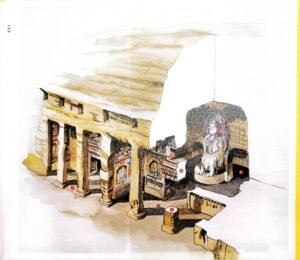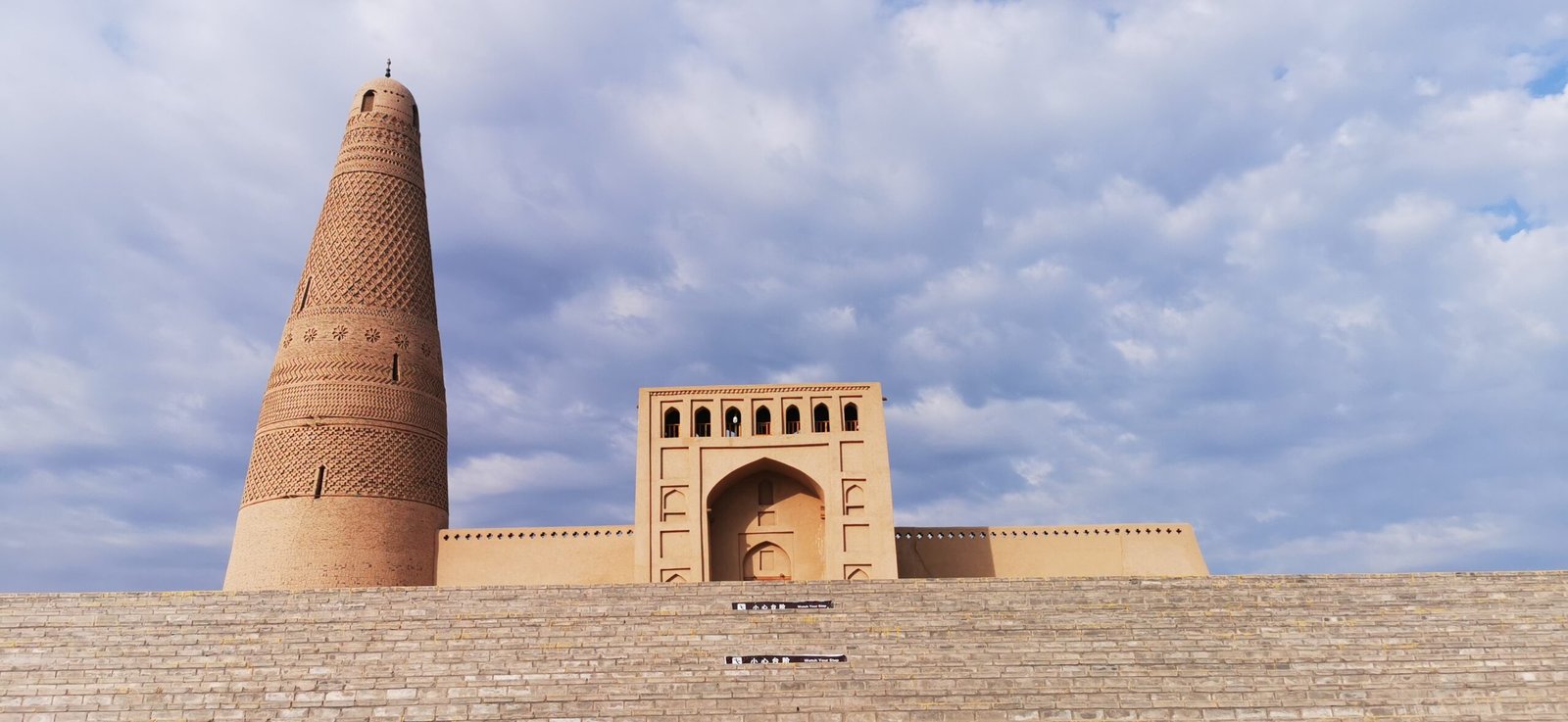Among the many masterpieces of ancient Chinese art, the Yungang Grottoes in China stand out as a pivotal starting point of large-scale Buddhist cave construction. These monumental Buddhist caves in China not only mark the beginning of a cultural and religious boom but also reflect a deep fusion of artistic traditions from India, Central Asia, and native Chinese styles. Situated in the northeast of Datong City, Shanxi Province, the Yungang Grottoes are among the earliest and most magnificent examples of grotto art, symbolizing both imperial power and the popularization of Buddhism in northern China.

The Start of Yungang Grottoes
Restore Buddhism in the Wencheng Emperor
The Yungang Grottoes owe their origins to the Northern Wei dynasty, specifically under the rule of Emperor Wencheng (r. 452–465 CE). This period marked a significant shift in state ideology, as the ruling Tuoba (Xianbei) clan re-embraced Buddhism after a period of suppression under Emperor Taiwu. With the support of the court and key religious figures such as the monk Tan Yao, Buddhism once again flourished, and the imperial government began sponsoring massive grotto construction as an act of both devotion and political consolidation.
The restoration of Buddhism during Emperor Wencheng’s reign was more than a religious gesture. It symbolized the state’s endorsement of a cosmopolitan culture that drew upon the spiritual and artistic wealth of the Silk Road. In this context, grotto art emerged as a means of promoting Buddhist doctrine while also demonstrating imperial grandeur. The construction of large-scale Buddhist caves in China was thus not only a religious act but also a manifestation of centralized power and cultural integration.
Carve Yungang Grottoes in the Northeast of Datong City
Beginning around 460 CE, the Yungang Grottoes were carved into the sandstone cliffs of the Wuzhou Mountain, just west of Datong. This strategic location was chosen both for its geological suitability and its proximity to the Northern Wei capital at Pingcheng (present-day Datong). The initial phase of construction, often attributed to the efforts of Tan Yao, focused on five monumental caves (Caves 16–20), each dominated by a massive seated Buddha and surrounded by smaller figures.
These early grottoes reflect a distinctly Indian influence, showcasing stylistic elements inherited from Gandharan and Gupta art traditions. At the same time, they exhibit features adapted to Chinese sensibilities, such as more sinicized facial expressions and symmetrical spatial arrangements. Over time, the project expanded to include over 50 major caves and 51,000 statues, making Yungang one of the largest grotto art complexes in East Asia.
Civilian Carvings After Moving the Capital out of Datong City
In 494 CE, the Northern Wei court moved its capital from Pingcheng to Luoyang, marking a turning point in the development of the Yungang Grottoes. Imperial sponsorship waned, and civilian and monastic patrons began to play a more prominent role in the continuation of grotto carving. This transition is evident in the stylistic changes and reduction in scale in the later grottoes.
While the early caves emphasized grandeur and imperial iconography, the later caves often featured more intimate and narrative-focused artworks. These included jataka tales (stories of the Buddha’s past lives), donor figures, and iconographic innovations that blended Buddhist themes with native Chinese decorative motifs. This democratization of grotto construction reflected the growing grassroots devotion to Buddhism and the increased accessibility of religious art in Northern China.
Yungang Grottoes’ Artistic Characteristics
As a masterpiece of grotto art, the Yungang Grottoes present a vivid illustration of the stylistic evolution of Buddhist caves in China. The site showcases an extraordinary variety of forms and techniques, encompassing grand imperial sculpture, Indian-inspired structures, and Chinese architectural imitations—all carved from solid rock.
Grand Buddha Statues at Yungang – Monumental Grotto Art
The most iconic images in the Yungang Grottoes are the colossal Buddhas of the early caves. These monumental figures, often over 10 meters high, are carved in full relief, projecting serenely from the cliff face. Caves 16–20 are the finest examples of this style, each housing a central Buddha flanked by bodhisattvas and celestial beings.
These grand Buddha statues are characterized by their calm expressions, balanced proportions, and simple yet dignified robes. The modeling reflects an emphasis on volume and clarity, with minimal decorative distraction. Despite their simplicity, these sculptures convey a powerful spiritual presence, embodying the Mahayana Buddhist ideals of compassion and universality. Their scale and solemnity also highlight the authority of the Northern Wei rulers, who used Buddhist imagery to legitimize their rule and connect to the broader Buddhist world.
Indian-Influenced Buddhist Caves with Central Pillars
Another distinctive feature of the Yungang Grottoes is the presence of caves modeled after Indian chaitya halls, featuring a central stone pillar. These caves, such as Cave 6, exhibit a square layout with a core column at the center, around which devotees could perform circumambulation (pradakshina), a common practice in Indian Buddhism.
The core pillar typically features multiple tiers, with images of Buddhas, bodhisattvas, and narrative reliefs carved into all four sides. The ceilings and walls are adorned with intricate carvings and paintings, often depicting scenes from the life of the Buddha. These designs reveal the direct influence of Indian Buddhist architecture, likely transmitted through Central Asian intermediaries and supported by the international nature of the Silk Road.
At Yungang, this Indian model was localized and adapted to suit Chinese aesthetic preferences, with the addition of decorative brackets, tiled roofs, and symmetrical compositions that mirror Chinese palatial architecture.
Chinese Wooden Architecture in Rock – Binary Grotto Design
One of the most fascinating aspects of the Yungang Grottoes is the incorporation of Chinese wooden architectural elements into rock-cut designs. This innovation is especially visible in the mid- to late-phase caves, where the interiors and facades mimic wooden beam structures, bracket sets (dougong), and even tiled eaves.
The so-called “binary grottoes”—those with twin chambers or mirrored layouts—demonstrate this trend. These caves often consist of a front chamber for ritual activities and a rear chamber housing the main icon. The ceilings are carved in imitation of coffered or caisson ceilings (zaojing), while pillars and walls replicate the look of timber construction.
This architectural mimicry not only reflects the localization of Buddhist grotto art but also demonstrates the deep interweaving of religious and secular visual culture in Northern Wei China. By carving Buddhist caves in the familiar language of native architecture, artisans made the spiritual realm more accessible and resonant to Chinese worshippers.
Conclusions
The Yungang Grottoes in China stand as a monumental testimony to the beginning of Buddhist grotto art in East Asia. As one of the earliest and grandest complexes of Buddhist caves in China, Yungang marked the dawn of a cultural era that saw the integration of foreign religious ideas with native Chinese artistic traditions. From the imperial carvings under Emperor Wencheng to the later civilian efforts after the capital’s relocation, the site reflects a dynamic interplay between politics, religion, and artistry.
Each phase of Yungang’s development contributes to our understanding of how grotto art evolved—from Indian-inspired structures to localized, Sinicized forms that laid the foundation for later sites like Longmen and Dunhuang. With its grandeur, diversity, and historical importance, the Yungang Grottoes remain a cornerstone in the study of Buddhist caves in China and a symbol of the Buddhist boom that would shape the cultural landscape of East Asia for centuries to come.

